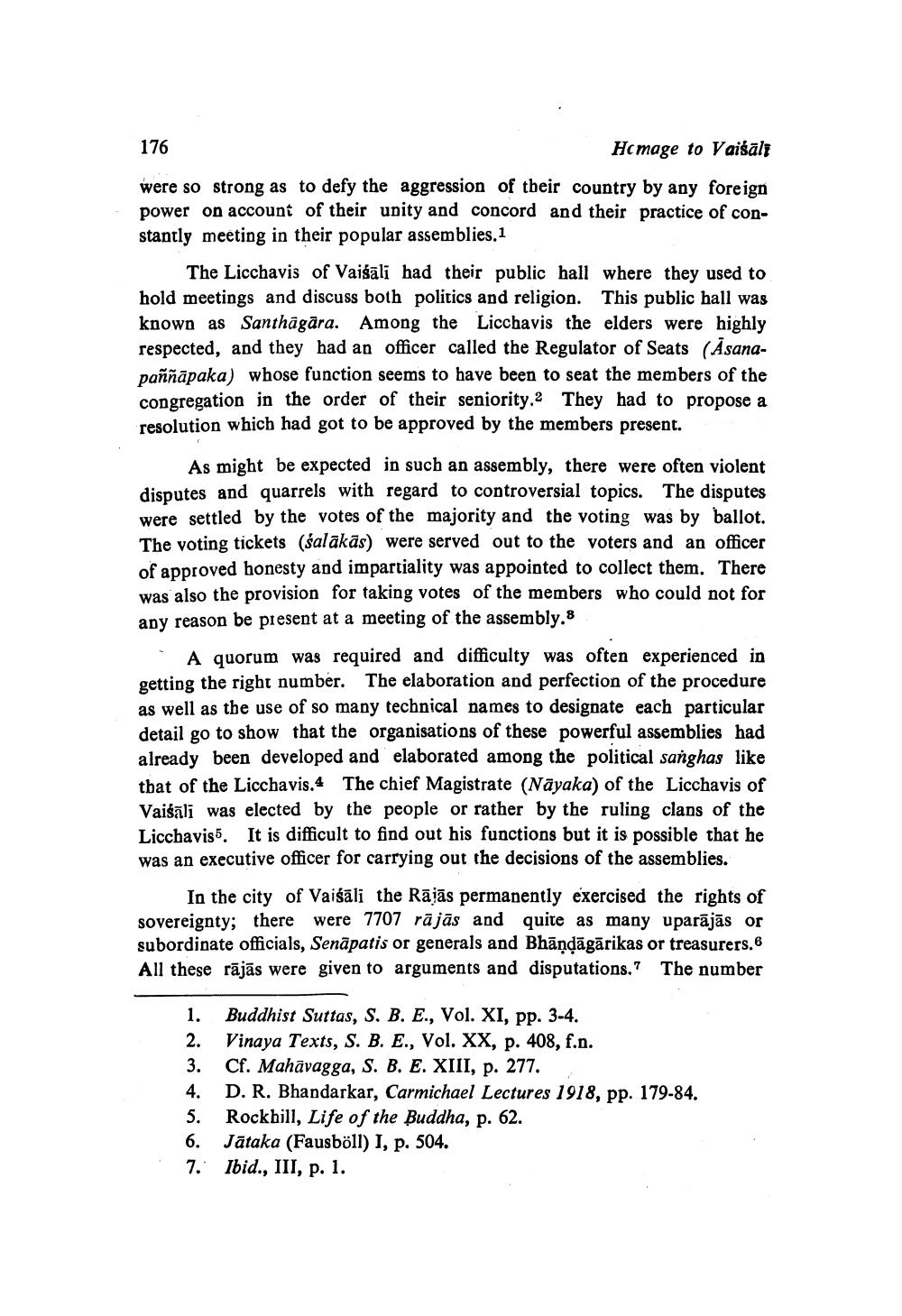________________ 176 Homage to Vaisali were so strong as to defy the aggression of their country by any foreign power on account of their unity and concord and their practice of constantly meeting in their popular assemblies.1 The Licchavis of Vaisali had their public hall where they used to hold meetings and discuss both politics and religion. This public hall was known as Santhagara. Among the Licchavis the elders were highly respected, and they had an officer called the Regulator of Seats (Asanapannapaka) whose function seems to have been to seat the members of the congregation in the order of their seniority.2 They had to propose a resolution which had got to be approved by the members present. As might be expected in such an assembly, there were often violent disputes and quarrels with regard to controversial topics. The disputes were settled by the votes of the majority and the voting was by ballot. The voting tickets (salakas) were served out to the voters and an officer of approved honesty and impartiality was appointed to collect them. There was also the provision for taking votes of the members who could not for any reason be present at a meeting of the assembly.8 A quorum was required and difficulty was often experienced in getting the right number. The elaboration and perfection of the procedure as well as the use of so many technical names to designate each particular detail go to show that the organisations of these powerful assemblies had already been developed and elaborated among the political sanghas like that of the Licchavis. The chief Magistrate (Nayaka) of the Licchavis of Vaisali was elected by the people or rather by the ruling clans of the Licchavis. It is difficult to find out his functions but it is possible that he was an executive officer for carrying out the decisions of the assemblies. In the city of Vaisali the Rajas permanently exercised the rights of sovereignty; there were 7707 rajas and quite as many uparajas or subordinate officials, Senapatis or generals and Bhandagarikas or treasurers.6 All these rajas were given to arguments and disputations. The number 1. 2. 3. 4. 5. 6. 7. Buddhist Suttas, S. B. E., Vol. XI, pp. 3-4. Vinaya Texts, S. B. E., Vol. XX, p. 408, f.n. Cf. Mahavagga, S. B. E. XIII, p. 277. D. R. Bhandarkar, Carmichael Lectures 1918, pp. 179-84. Rockhill, Life of the Buddha, p. 62. Jataka (Fausboll) I, p. 504. Ibid., III, p. 1.




